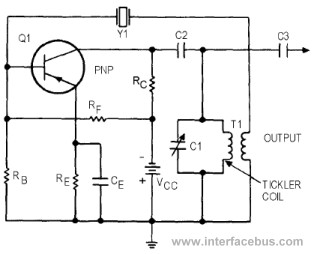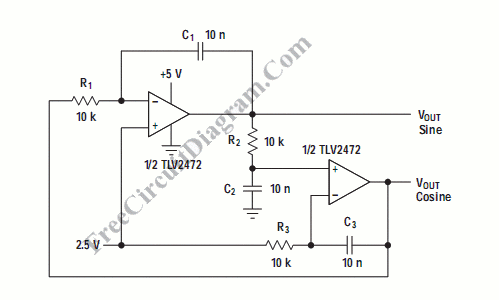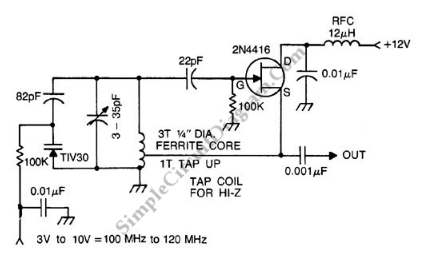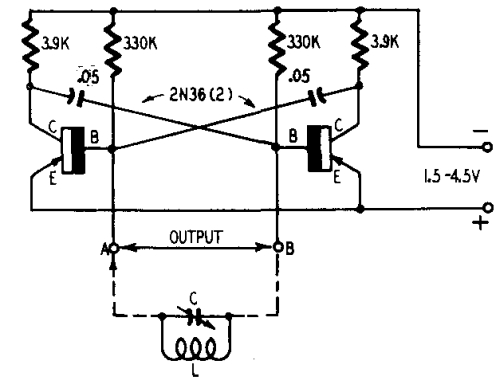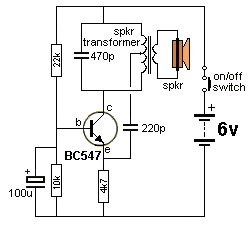
Tunnel Diode Oscillator
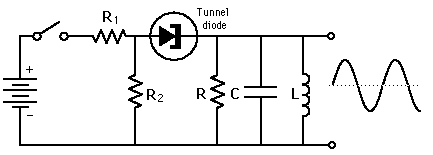
The excess small forward current flow in a tunnel or Esaki diode is a manifestation of quantum mechanical tunneling.
Tunnel diodes, also known as Esaki diodes, are semiconductor devices that exploit the quantum mechanical phenomenon of tunneling to achieve their operation. Unlike conventional diodes, which rely on the rectification of current through a p-n junction, tunnel diodes have a heavily doped p-n junction that allows for the tunneling of charge carriers. This unique structure enables the diode to exhibit negative resistance in certain regions of its current-voltage (I-V) characteristics.
When a small forward voltage is applied to a tunnel diode, electrons from the valence band of the p-type material can tunnel through the narrow energy barrier to the conduction band of the n-type material. This tunneling effect results in a small forward current, which is significantly higher than what would be expected from conventional diodes under similar conditions. The I-V curve of a tunnel diode typically shows an initial increase in current with voltage, followed by a region where the current decreases with increasing voltage—a phenomenon referred to as negative resistance.
Tunnel diodes are characterized by their high speed and ability to operate at microwave frequencies, making them suitable for various applications such as oscillators, amplifiers, and high-frequency switching circuits. The precise control of the doping levels and the thickness of the junction can be critical in optimizing the performance of the device, allowing for tailored responses in specific electronic applications. The understanding of quantum mechanical tunneling and its implications in semiconductor physics is essential for the effective design and implementation of tunnel diode circuits.The excess small forward current flow in a tunnel or Esaki diode is a manifestation of quantum mechanical tunneling. 🔗 External reference
Tunnel diodes, also known as Esaki diodes, are semiconductor devices that exploit the quantum mechanical phenomenon of tunneling to achieve their operation. Unlike conventional diodes, which rely on the rectification of current through a p-n junction, tunnel diodes have a heavily doped p-n junction that allows for the tunneling of charge carriers. This unique structure enables the diode to exhibit negative resistance in certain regions of its current-voltage (I-V) characteristics.
When a small forward voltage is applied to a tunnel diode, electrons from the valence band of the p-type material can tunnel through the narrow energy barrier to the conduction band of the n-type material. This tunneling effect results in a small forward current, which is significantly higher than what would be expected from conventional diodes under similar conditions. The I-V curve of a tunnel diode typically shows an initial increase in current with voltage, followed by a region where the current decreases with increasing voltage—a phenomenon referred to as negative resistance.
Tunnel diodes are characterized by their high speed and ability to operate at microwave frequencies, making them suitable for various applications such as oscillators, amplifiers, and high-frequency switching circuits. The precise control of the doping levels and the thickness of the junction can be critical in optimizing the performance of the device, allowing for tailored responses in specific electronic applications. The understanding of quantum mechanical tunneling and its implications in semiconductor physics is essential for the effective design and implementation of tunnel diode circuits.The excess small forward current flow in a tunnel or Esaki diode is a manifestation of quantum mechanical tunneling. 🔗 External reference
